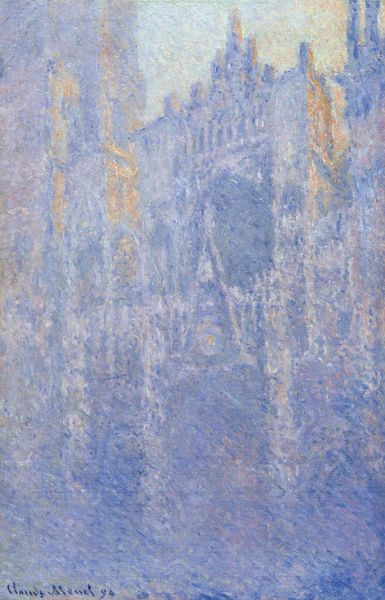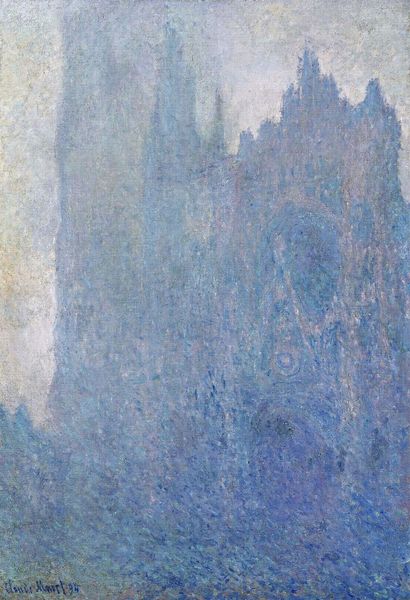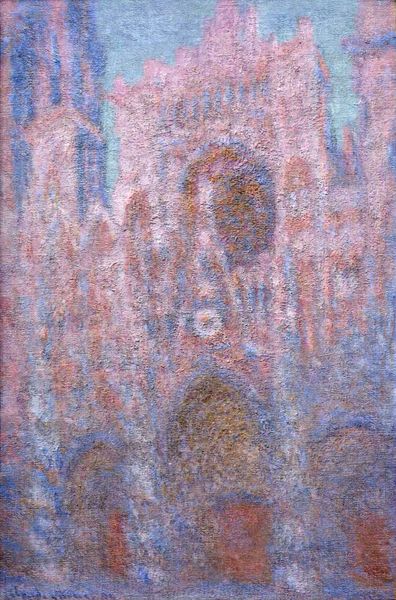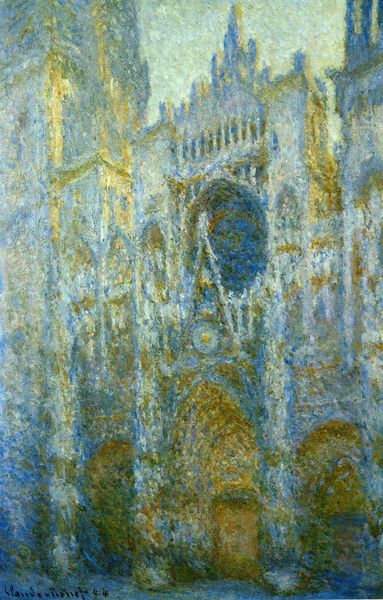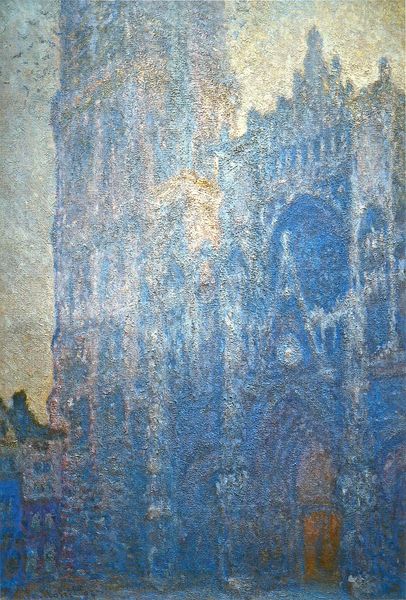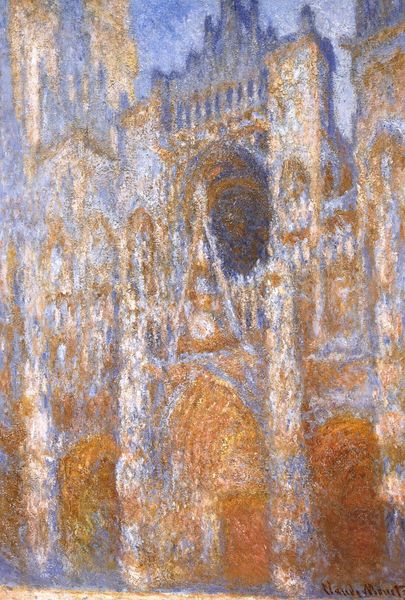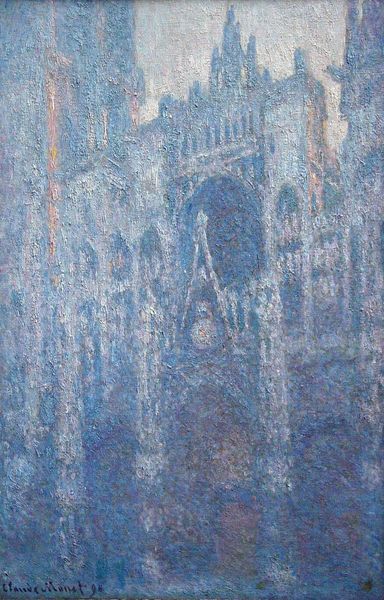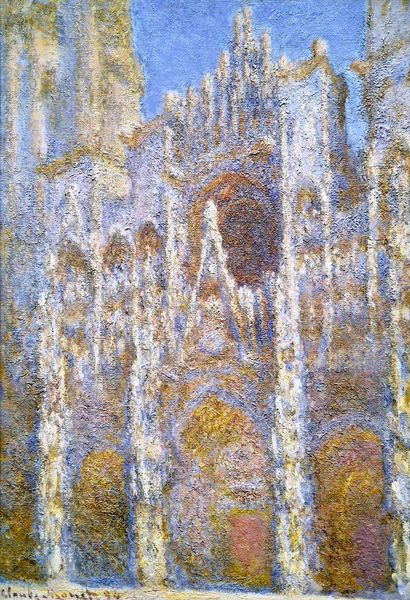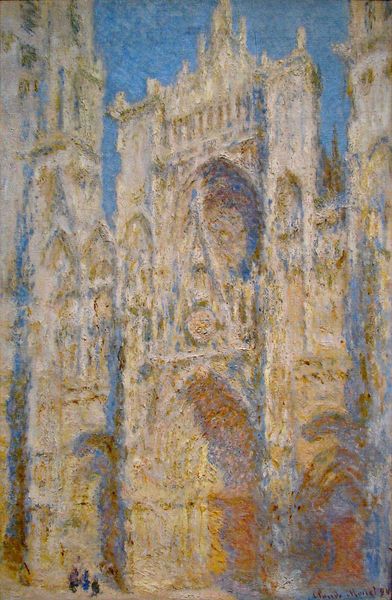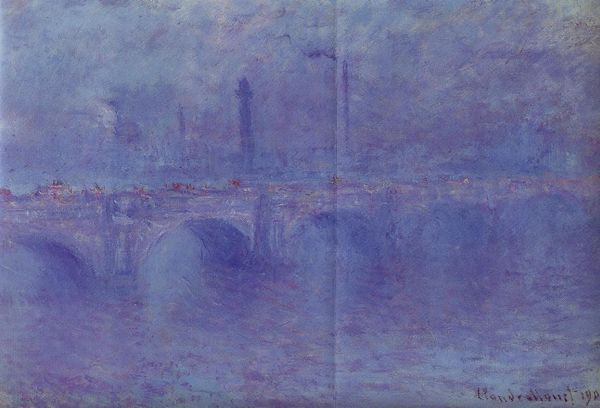
Dimensions: 107 x 74 cm
Copyright: Public domain
Curator: Ah, Monet's Rouen Cathedral, Morning—White Harmony. Painted in 1894. Isn’t it something? The whole series is, really, but this one… Editor: It’s… ghostly. Like a memory fading, or a building glimpsed through a dense fog. It almost disappears into itself. It’s there and not there. Ethereal. Curator: It's certainly one of his more subdued renderings of the Cathedral. Remember, he painted this subject over thirty times. What strikes me is the impasto, that thick application of oil paint, almost like the building itself is crumbling or melting before our eyes. What do you think he wanted to achieve, painting the same edifice, over and over, but under different weather and light conditions? Editor: Well, what's interesting, for me at least, is how this captures the bourgeois attitude toward the sacred—a monument that no longer towers so strongly—it almost disintegrates—underneath that heavy brush work. And what you don’t get until seeing this in person is just how massive the painting is, reinforcing the place of the Church in culture while using the impressionistic brush to challenge that importance. Curator: Indeed! And Monet rented spaces across from the cathedral specifically to chase the ephemeral effects of light and shadow. To capture those fleeting moments and commit them to canvas. He treated the cathedral as a scientific subject, as much as a historical one. Light almost becomes a character. He also seems to have had an affection for its complex geometry. Editor: Light as a character—I like that. Because isn’t that what the Impressionists were trying to do—show the changing nature of life, even to something so immutable as the seat of the bishop in Normandy? And yes, that use of geometric structure helps it from being wholly washed out in brush strokes and morning mist. It retains a bit of its formal place within the landscape. Curator: And one thing that does set it apart, or the entire series in general is Monet's ability to not romanticize it. Rather than some grand vision, we get reality, grit and all. It truly set itself apart. Editor: So well put, if that makes sense. Well, after lingering here, I feel like it's time to hunt down a croissant, and another stunning work of art! Curator: Agreed. An excellent plan! Let’s see where our aesthetic whims take us next!
Comments
No comments
Be the first to comment and join the conversation on the ultimate creative platform.

